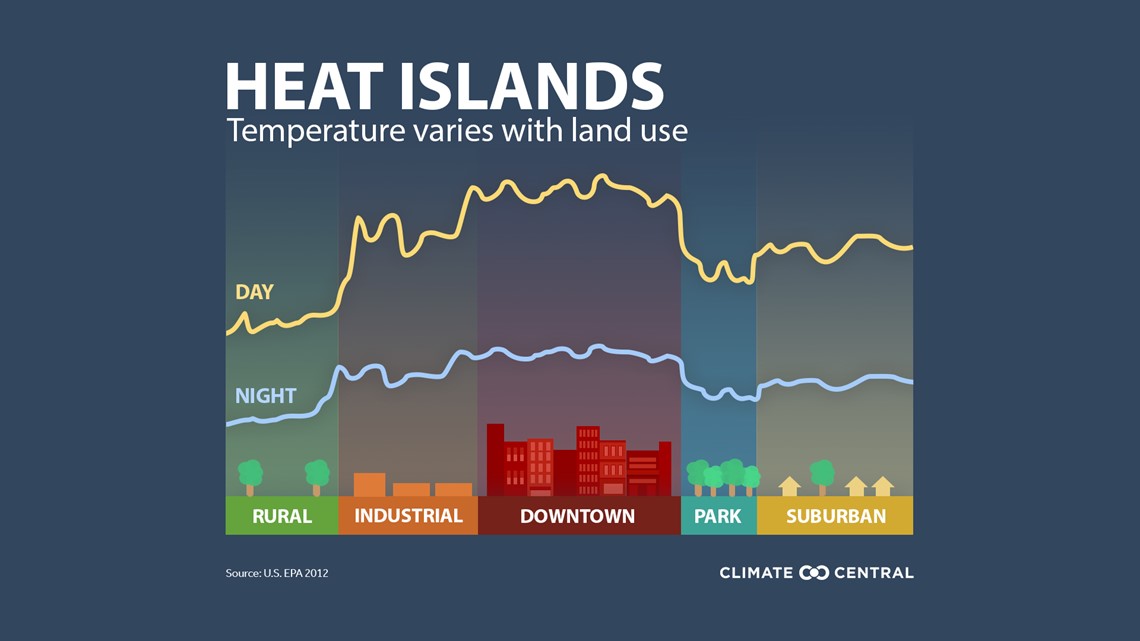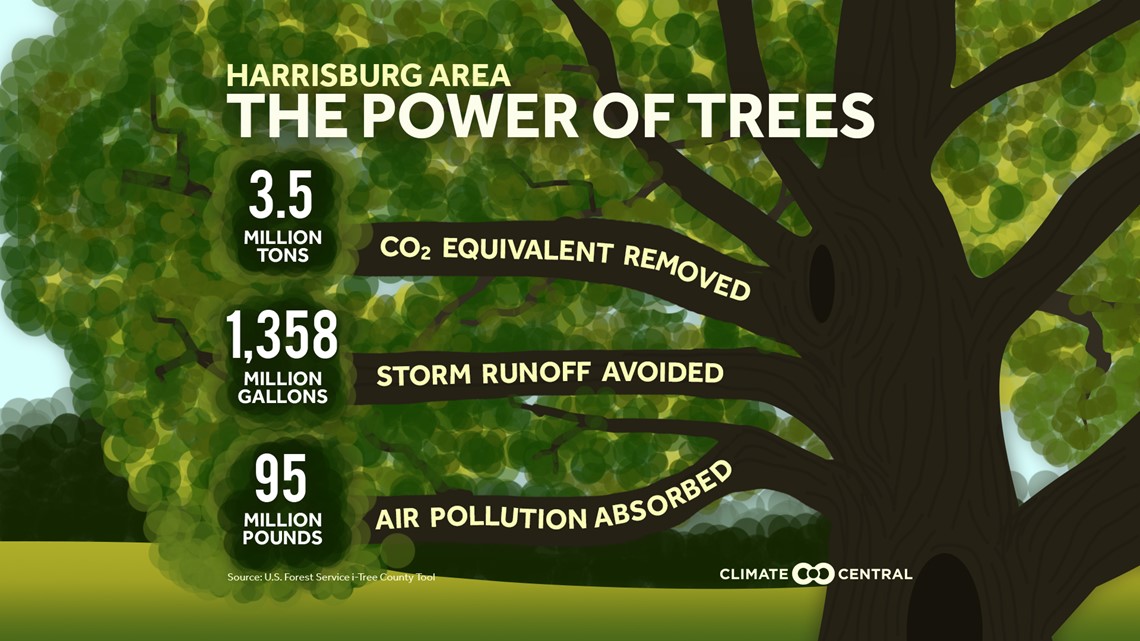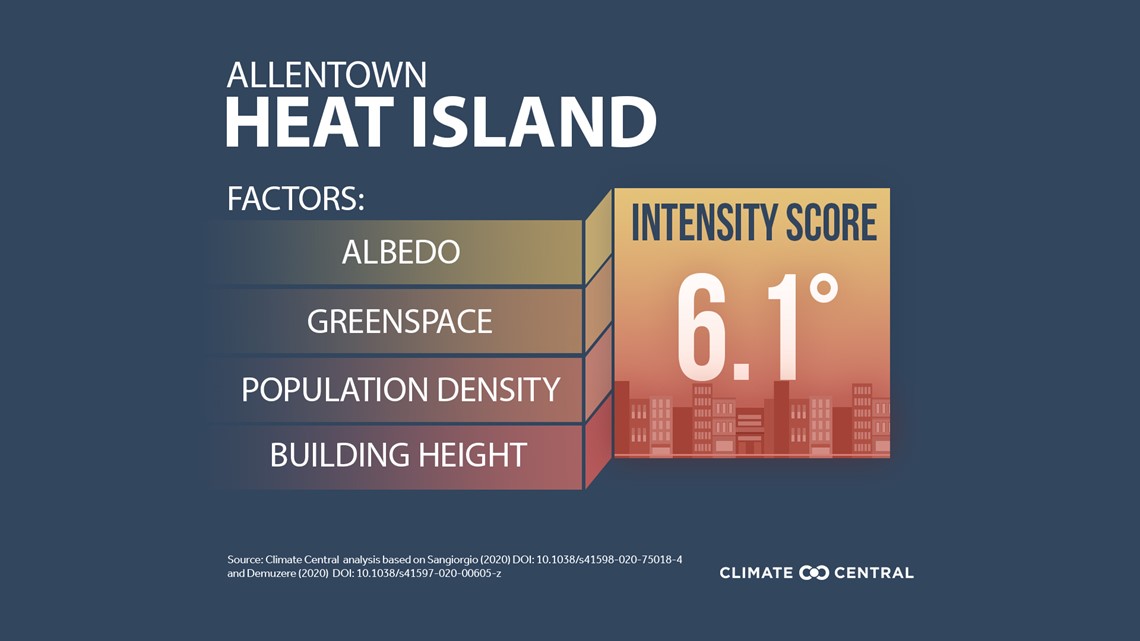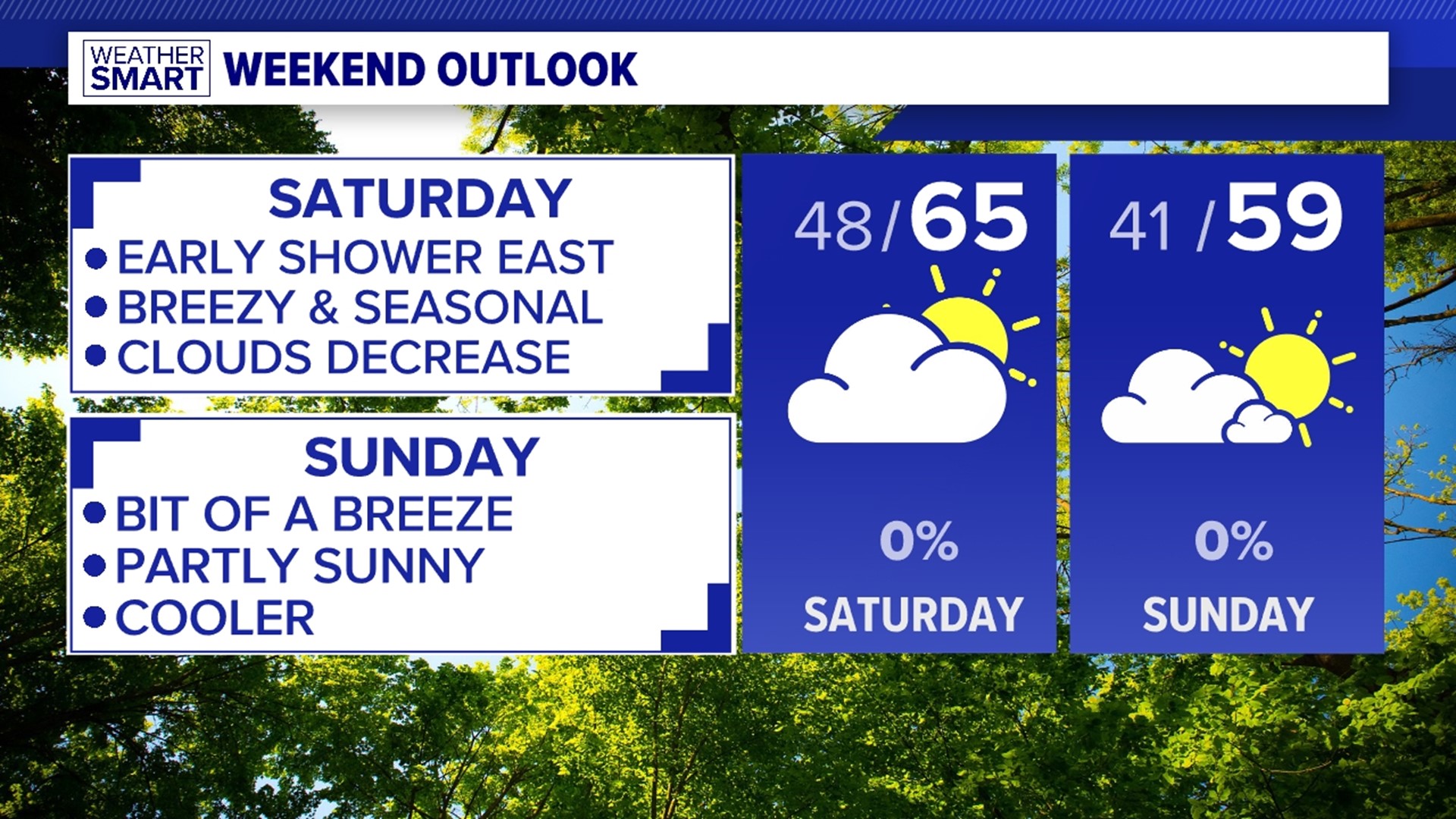Think of your driveway compared to your front lawn in the middle of a hot summer day. Obviously, the pavement is hotter than the grass.
That's a heat island on a small scale.
So, now turn your driveway into a full blown metropolitan area, full of parking lots, paved streets and buildings. What do you get? A hot mess of a heat island that's much warmer than the countryside in the middle of a hot summer day.
According to Climate Central, about 85% of the U.S. population lives in metropolitan areas. Those aforementioned parking lots, pavement, buildings, etc. all absorb and retain heat during the day and radiate that heat back into the surrounding air.
In fact, neighborhoods in highly-developed urban areas can experience mid-afternoon temperatures that are 15-20° hotter than countryside regions outside of the city.


Heat islands are strongly influenced by albedo, which measures how much a surface either reflects or absorbs sunlight, and in turn, heat.
Snow has a very high albedo. It's bright white and reflects sunlight, which is why it takes a very long time to melt away at times, especially when it piles up.
Pavement, buildings, driveways, etc. have a very low albedo, meaning it absorbs the heat and light better.
Think of how you're much warmer on a sunny day when you wear a black shirt instead of a white shirt made of the same material.


But it's not just about heat.
Heat islands amplifiy air pollution by creating their own micro-climate that traps air within the metropolitan area. They can amplify respiratory problems such as asthma, among others as well.
Not that cities aren't doing anything to help. Trees along paved streets aid the issue, as well as the construction of rooftop gardens and other greenery.
In 2010, the city of Philadelphia passed the Philadelphia Cool Roof Ordinance – legislation requiring all new construction in the city to use white roof coverings or those that are rated by ENERGY STAR as highly reflective. The law exempts certain projects, including vegetative roofs and those with rooftop photovoltaic and solar thermal equipment.


Data provided from Climate Central does not reflect Harrisburg-specific heat island data, however in nearby Allentown, temperature data suggests the city is, on average, 6.1° warmer than its countryside neighbors when factoring in albedo, greenspace, population density and building height. Nearby Baltimore comes in at 7.1°, and Philadelphia rests in the middle at 6.3°.
For the full report from Climate Central on heat islands, you can visit their website.
Until next time,
-Chief Meteorologist Bradon Long



